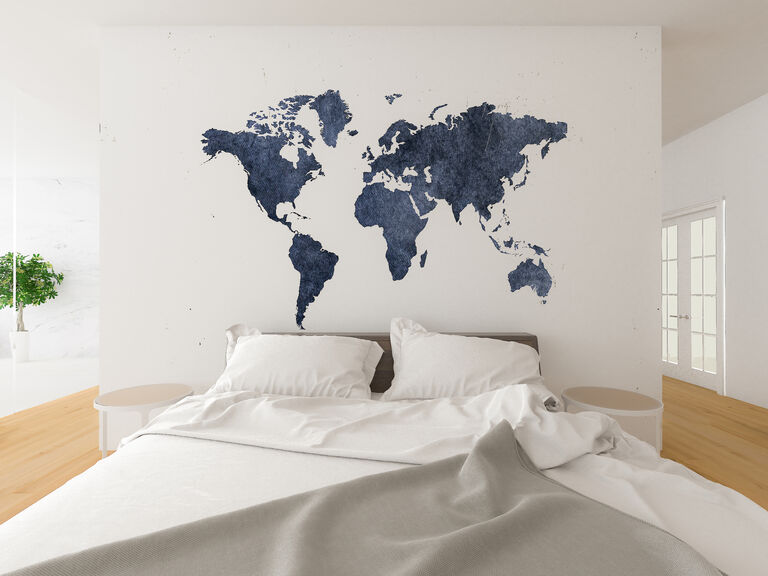SLEEPING HABITS AROUND THE WORLD

At all times there is a constant stream of people falling asleep or already dreaming. No matter where you are in the world or what time zone you are in, someone somewhere will be nestling into bed.
However, living in a world of over 7 billion people means that there are many sleep traditions and habits that aren’t widely known!
TEMPUR looks at different culture’s sleep habits, giving you the ultimate guide to sleeping around the world…
DIFFERENT SLEEPING ENVIRONMENTS
As humans, we invest a lot in sleep and comfort. The most common bedroom environment, particularly in Europe and the USA, usually consists of a bed frame, mattress, duvet, blankets, and pillows, as well as our own personal touches.
When it comes to sleep, many of us will seek out the perfect mattress to help us get those all-important ZZZ’s. For instance, the TEMPUR mattress range uses the special viscoelastic material which aids a more restful sleep and relieves pressure points to help us recover from the day’s events.
However, sleeping environments around the world vary in many ways:
- Tatami mats – Traditional Japanese bedrooms are often floored with tatami mats, which can be made of woven rush grass, rice straw or polystyrene foam. To sleep, a thin mattress is rolled out on to the mats and often folded away during the day, creating more space! Some people believe sleeping on the floor has many health benefits
- Hammocks – In South and Central America, hammocks are a popular choice of bed. They are made out of rope or cloth and are elevated from the ground, which means the person sleeping is safe from snakes and other insects! The swaying nature of hammocks can rock you to sleep, and its banana like shape puts you in an ideal sleeping position helping us to fall asleep faster
- Mosquito nets – In those places at risk of malaria such as the Saharan African countries of Mali and Ethiopia, mosquito nets are used around the sleeping area to reduce the threat of contracting malaria from the large mosquito population
- Co-sleeping – This is when multiple people sleep in a bundle, varying from mother and child to whole tribes resting their heads together. In Southern Europe, Asia, Africa and South and Central America, mother and child often share beds, which is thought to help strengthen their bond and even reduce stress. Co-sleeping in this sense can also help regulate a baby’s breathing!In aboriginal tribes, many people sleep in a row with the young and elderly in the middle and healthier adults on the end for protection.
SLEEP PATTERNS ACROSS THE WORLD
As our circadian rhythm is affected by light and temperature, most people will sleep during the night once the sun has set. However, there are exceptions to this sleeping pattern norm:
- Taking a Siesta – Otherwise known as a midday nap or a Ta’assila in Egypt. Siestas are common in Mediterranean countries, especially Spain, and originate from giving farmers a time of rest when the sun is at its hottest.
- Take an Inemuri at work – An inemuri is a Japanese form of a nap which is encouraged at work as it is believed to increase productivity
- No sleep schedules – In some parts of the world, tribes such as Efe of the Democratic Republic of Congo look back to our hunter-gatherer ancestors, and instead of following a strict sleeping schedule, they sleep whenever they want to
- Fear sleep – In the Indonesian island of Bali, people have acquired the ability to fall into a deep sleep instantly in stressful situations. This is known as ‘fear sleep’, which helps to erase our fear response
DREAM CATCHERS AND WORRY DOLLS
Whilst sleep environments and patterns vary from culture to culture, the world has adopted some sleep traditions which you might be familiar with.
For instance, Native Americans created Dream Catchers replicating a spider’s web woven onto a hoop with sacred items such as feathers and beads attached to it. It was hung over infants during sleep as a form of protection, allowing good dreams to pass through and catching nightmares in the web.
Today, the principle still resonates and dream catchers can be seen hanging over beds worldwide.
Worry dolls are another traditional sleeping object native to Guatemala. Before sleep, children are prompted to tell any worries to their worry doll, which in turn allows them to fall asleep soundly. This tradition is used by many across the world, helping anxious children in particular to deal with troubling thoughts before bedtime.
http://discovermagazine.com/2007/dec/sleeping-like-a-hunter-gatherer
https://www.huffingtonpost.co.uk/entry/sleep-habits-world-global_us_56c205d8e4b0c3c550520679
https://www.howsleepworks.com/anthropology_cultures.html
https://sleep.org/articles/sleep-customs-around-the-world/
https://www.somnosure.com/blog/sleep-habits-worldwide-culture-vs-biological-need-for-sleep
Download our brochure
Want to know more about our story? Download our brochure to see more.

Visit a TEMPUR® store or talk to a sleep expert
Want to know more about TEMPUR®? Either visit us in store or arrange to speak to us today.
Get the latest news and offers
Sign up to receive news and offers about TEMPUR® products. Detailed information on the use and storage of data can be found in the Privacy Policy.



